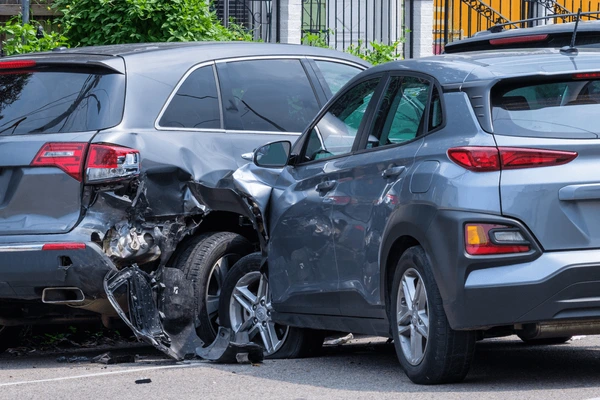Introduction
Every car reaches a point where it can no longer be driven. Whether due to age, damage, or mechanical failure, it must eventually be retired from the road. But what happens next makes a real difference — not just for the car owner but for the environment as well.
There are two main paths a vehicle can take when it is no longer in use. One leads to landfill, where it adds to the growing issue of waste. The other leads to buyers who see the value in the remaining parts, materials, and potential for reuse. These buyers help create a chain of activity that prevents waste and supports the wider automotive cycle. This article looks at the importance of this decision and why it matters more than most people realise.
The Growing Issue of Automotive Waste
Australia generates hundreds of thousands of end-of-life vehicles each year. According to the Federal Chamber of Automotive Industries, more than one million new vehicles are sold annually, which means an almost equal number must exit the market. If these older vehicles are not managed properly, they can contribute significantly to landfill volumes.
Cars contain not just metal, but plastics, rubber, glass, fluids, and electronic components. When dumped in landfill, these materials break down slowly, releasing harmful substances into the soil and water. Batteries, fuel residue, brake fluid, and air conditioning gases all carry environmental risks if not properly handled.
What Car Buyers Look For
Car buyers who specialise in collecting old or damaged vehicles have a clear purpose. They examine what parts can be reused, sold, or repurposed. Even if a car is not drivable, it may have a working engine, gearbox, alternator, or set of tyres. Many components can be removed safely, tested, and sold to people who need affordable parts.
In addition to mechanical parts, some buyers also value panels, windows, and interior fittings. These items often come from models that are no longer manufactured, making them useful to mechanics and owners of older vehicles who cannot find new replacements.
Reuse Reduces Demand for New Materials
Every car that is salvaged instead of scrapped helps reduce the demand for newly produced parts. This supports a broader effort to conserve raw materials like iron ore, aluminium, and copper, which are used to build engines, frames, and electronics. It also cuts back on the energy needed to mine, process, and ship these materials.
By salvaging vehicles, buyers help extend the life of other cars and reduce the number of new parts that must be produced. This, in turn, lowers the carbon emissions linked with manufacturing and transport.
Salvage Helps Mechanics and Drivers
Many car owners face expensive repairs when a single part fails. Buying a used component from a salvaged vehicle can provide a solution that keeps their car running without spending too much. Mechanics also rely on salvaged parts to service vehicles, especially models that are older or out of production.
In this way, car buyers who collect and dismantle end-of-life vehicles become part of a wider support system. They help ensure that one car’s end can keep another one going.
Metal Recovery and Recycling
After parts are removed, the car shell still has value. Vehicles are made largely from steel and aluminium. Once stripped of components and fluids, the frame is crushed and sent to recycling plants. Here, the metal is processed, melted down, and used again in new products.
This reduces the need for mining and helps industries like construction, manufacturing, and transportation lower their environmental impact. Recycling metal uses far less energy than producing it from raw materials, which makes it one of the more effective forms of industrial waste reduction.
Environmental Impact of Sending Cars to Landfill
Sending a car directly to landfill skips every useful step in the salvage process. It means that working parts are wasted, usable metal is buried, and harmful fluids might leak into the earth. This approach also increases the demand for new materials since fewer parts are available for reuse.
Many landfills in Australia are already under pressure, and cars take up a large amount of space. Their bulk, combined with slow decomposition, creates long-term issues that affect local environments and public health.
A Smarter Choice for Old Vehicles
Car owners who choose to hand over their vehicles to salvage buyers contribute to a cleaner and more efficient cycle. Even cars that no longer start or have been written off in accidents can be stripped for parts, processed for metal, and kept out of landfill.
This makes the choice to sell an old car more than just a financial decision. It becomes a way to reduce waste, lower emissions, and support people who depend on parts to maintain their own vehicles.
When Letting Go Makes Room for Something Better
There comes a time when every car owner must say goodbye to a vehicle that has served its purpose. In many cases, selling it might feel like a burden, especially when the car is no longer running. That is where services such as cars for cash Gold Coast offer a helpful solution. These buyers take in old cars that others might overlook and ensure they are handled the right way. Whether by recovering parts or recycling the frame, they give the vehicle one last role to play — helping others, reducing waste, and clearing space for something new.
Conclusion
The fate of an old vehicle carries more weight than it first appears. When a car ends up in landfill, it adds to the country’s growing waste problem and misses the chance to be reused. But when handed to the right buyer, that same car becomes a source of parts, materials, and support for others.
Car buyers who work in the salvage space are not just taking unwanted vehicles off people’s hands — they are making sure those vehicles continue to serve a purpose. Their work keeps useful parts in circulation, helps reduce pollution, and slows the demand for new materials.
Choosing what to do with your old car is not just about money or space. It is about being part of a cycle that values reuse and minimises harm. And that choice, in the long run, benefits everyone.







